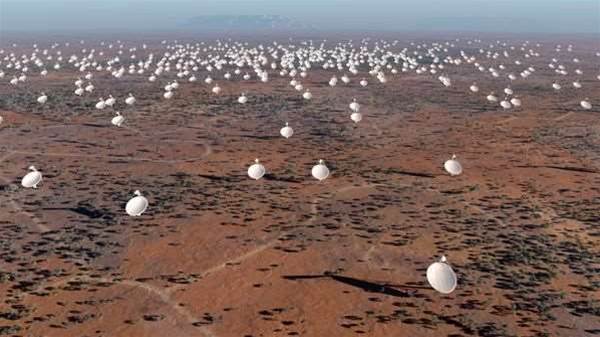Interference from low Earth orbit (LEO) Starlink satellites launched by SpaceX is now significantly affecting radio astronomy observations, a large survey by Western Australia's Curtin University has found.

While satellites interfering with optical astronomy is a known issue that is well-documented, the detrimental effects on radio astronomy is only just being discovered.
Curtin focused on Starlink, which had over 7000 satellites in orbit during the four-month study, as it has the largest constellation of current LEO operators.
A team at the university's Curtin Institute of Radio Astronomy (CIRA) led by PhD candidate Dylan Grigg detected over 112,000 radio emissions from 1806 Starlink satellites.
CIRA conducts research with the Murchison Widefield Array (MWA), and the organisation is also part of the consortium jointly constructing the Square Kilometre Array (SKA) radio telescope.
For the survey, published in the Astronomy and Astrophysics journal, the CIRA team collected and analysed 76 million images of the sky, using a prototype station for the SKA, the Engineering Development Array 2 (EDA2).
In some datasets, up to 30 percent of images showed Starlink interference, Grigg's team observed.
In a twist, some of the interference emitted by the satelltes was in bands in which no signals are supposed to be present.
Grigg's team picked up signals from 703 satellites in the 150.8 megahertz band, which may originate from components such as electronics on board the satellites.
Known as unintended electromagnetic radiation (UEMR), the emissions are outside the LEO satellites designated downlink frequencies.
UEMR in several other frequencies was also observed, and SpaceX engineers suggested to the CIRA team that the signals originated from propulsion or avionics systems in the satellites, which were orbit-raising at the time of detection.
As UEMRs are not part of intentional signals, astronomers can't easily predict them or filter them out, Grigg explained.
"Satellites are interfering with radio telescopes in the most radio-quiet places on Earth," the CIRA team wrote.
Professor Steven Tingay, the executive director of CIRA, pointed out that Starlink is not doing anything wrong or violating current regulations.
Tingay said discussions between CIRA and Starlink have been constructive. CIRA hopes to keep the dialogue open.
Several other satellite constellations are being launched into low Earth orbit currently.
They include Amazon's Kuiper, and Eutelsat's OneWeb which have existing mega-constellations.
LEO constellations operated by Chinese company Shanghai Spacecom Satellite Technology and Russia's Sfera are also planned.


_(20).jpg&h=140&w=231&c=1&s=0)

.png&h=140&w=231&c=1&s=0)






 iTnews Executive Retreat - Security Leaders Edition
iTnews Executive Retreat - Security Leaders Edition












_(1).jpg&h=140&w=231&c=1&s=0)



